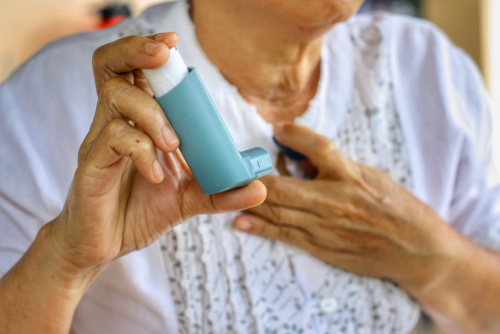After the 9/11 terrorist attacks, the air in lower Manhattan was filled with poisonous compounds, metals, and carcinogens. Due to breathing in the harmful toxins in the dust cloud — and exposure to the hazardous materials in the debris — many responders who worked on the recovery efforts in the immediate aftermath of 9/11 developed various lung conditions. According to studies, some firefighters’ lungs aged by a decade or more in just the first few weeks after the terrorist attacks.
Countless survivors who lived in lower Manhattan in the days and weeks after 9/11 have also been diagnosed with breathing issues and pulmonary conditions. Due to the long latency periods for many of these illnesses, responders and survivors continue to develop diseases affecting their lungs and airways to this day. The September 11th Victim Compensation Fund recognizes the impact 9/11 lung conditions can have on responders and survivors and awards compensation for the economic and non-economic losses they’ve suffered.
9/11 Lung Cancer
The 9/11 dust cloud contained thousands of known carcinogens and hazardous substances including concrete, heavy metals, asbestos, calcite, gypsum, dioxins, mercury, PCBs, and silica. As a result of breathing in these dangerous compounds, hundreds of 9/11 responders and survivors who were present in the NYC Exposure Zone developed various cancers, including 9/11-related lung cancer.
Lung cancer is among the top fifteen 9/11 cancers certified in both responders and survivors by the WTC Health Program. Unfortunately, many don’t realize they have it until the later stages of the disease when symptoms begin to appear. Warning signs can include a persistent cough, shortness of breath, coughing up blood, fatigue, and numerous other symptoms. Although the five-year survival rate is low for stage IV lung cancer, the condition may be treatable if it’s caught early.
What is Interstitial Lung Disease?
Not to be confused with lung cancer, interstitial lung disease refers to a group of diseases that begin with inflammation and can cause fibrosis in the lungs. As a result of the scarring, breathing can become difficult, and the affected individual may not be able to get enough oxygen into their bloodstream. Unfortunately, the condition often gets progressively worse with time.
Although symptoms can vary, there are several warning signs that most interstitial lung diseases have in common, including:
- Shortness of breath
- Dry cough
- Fatigue
- Weight loss
- Chest pain
While anyone can develop interstitial lung disease, certain toxins found in the 9/11 dust cloud have been linked to increased risk of various forms of the illness. For example, exposure to asbestos is known to cause the lung condition asbestosis, as well as mesothelioma — a rare type of cancer that can affect the lining of the lungs.
In other instances, interstitial lung disease can be caused by an autoimmune disease. Research has shown that inhalation of crystalline silica — a component of the 9/11 dust cloud and debris — is a significant risk factor associated with rheumatoid arthritis, a condition that may also cause scarring in the lungs.
Similarly, silica dust and other toxins have been linked to sarcoidosis, a condition that causes the immune system to overreact and commonly affects the lungs. Left untreated, sarcoidosis can lead to long-term adverse effects such as pulmonary fibrosis or pulmonary hypertension. Critically, research has revealed the incidence rates of the condition among 9/11 firefighters and emergency workers became significantly elevated soon after the terrorist attacks.
9/11-Related Lung Diseases and the WTC Health Program
While many 9/11 responders spent days, weeks, and months working on the recovery and clean-up efforts, thousands of them face an increased risk of not only cancer and interstitial lung disease but other conditions affecting the breathing passages, as well. Both new-onset and WTC-exacerbated Chronic Obstructive Pulmonary Disease (COPD) are recognized by the WTC Health Program as certifiable 9/11-related health conditions, as well as asthma and other illnesses obstructing the airways.
Sometimes, responders and survivors do not realize they have a lung cancer, disease, or illness until years later. This is why it’s crucial to ensure that you register with the WTC Health Program for health monitoring and treatment to detect any 9/11-related lung condition as soon as possible. Importantly, any 9/11-related lung cancer or disease must first be certified by the program in order to submit a claim for compensation to the VCF.
Contact a New York City 9/11 Victim Compensation Fund Attorney
If you’re an eligible responder or survivor who suffers from 9/11 lung cancer or another lung condition linked to the toxic dust cloud, you may be entitled to compensation from the VCF. However, submitting a claim for compensation involves many confusing regulations and a significant amount of paperwork. It’s best to have an experienced 9/11 VCF attorney on your side who can guide you through the process to ensure you receive the maximum amount of compensation to which you’re entitled.
The 9/11 Victim Compensation Fund attorneys at The Dearie Law Firm, P.C. have represented claimants and their families in 9/11 VCF claims for over a decade. For a free consultation, contact us today.

